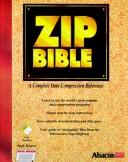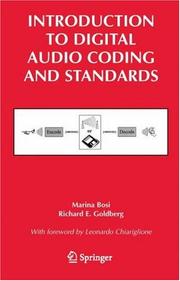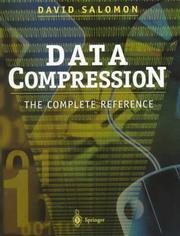| Listing 1 - 10 of 12 | << page >> |
Sort by
|
Book
ISBN: 2100016814 Year: 1993 Publisher: Paris : Dunod,
Abstract | Keywords | Export | Availability | Bookmark
 Loading...
Loading...Choose an application
- Reference Manager
- EndNote
- RefWorks (Direct export to RefWorks)
Book
ISBN: 9782321017349 2321017341 Year: 2022 Publisher: Paris : Le Robert,
Abstract | Keywords | Export | Availability | Bookmark
 Loading...
Loading...Choose an application
- Reference Manager
- EndNote
- RefWorks (Direct export to RefWorks)
Molière a-t-il tout piqué à Corneille ? Qui a écrit la Bible ? Comment a-t-on démasqué l'Unabomber ? En passant au crible les textes et leurs styles, linguistes et statisticiens mènent l'enquête grâce à la stylométrie. Cette méthode d'investigation révolutionnaire qui prend ses sources chez les scribes de Galilée, s'est solidifiée il y a plus d'un demi-siècle dans les couloirs de Harvard avant d'arriver dans nos tribunaux. L'objectif ? Identifier qui se cache derrière n'importe quel texte. De César à Shakespeare, en passant par les complotistes de l'affaire QAnon, Elena Ferrante ou encore le corbeau de l'affaire Grégory, la stylométrie n'épargne rien ni personne... au point d'élucider certains des plus vieux cold cases et mystères de l'histoire. Pour le meilleur - et pour le pire ?
Statistique linguistique. --- Stylistique. --- Enquêtes linguistiques. --- Données --- Compression (informatique). --- Qualité d'auteur --- Critique textuelle

ISBN: 155755305X Year: 1996 Publisher: Grand Rapids, Mich. : Abacus,
Abstract | Keywords | Export | Availability | Bookmark
 Loading...
Loading...Choose an application
- Reference Manager
- EndNote
- RefWorks (Direct export to RefWorks)

ISBN: 9781402073571 Year: 2003 Publisher: Boston : Kluwer Academic Publishers,
Abstract | Keywords | Export | Availability | Bookmark
 Loading...
Loading...Choose an application
- Reference Manager
- EndNote
- RefWorks (Direct export to RefWorks)
Psychoacoustique. --- Psychoacoustics --- Données --- Imagerie acoustique. --- Acoustic imaging --- Data compression (Computer science) --- Compression (informatique) --- Données
Book
Year: 1967 Publisher: Cambridge : Cambridge University Press,
Abstract | Keywords | Export | Availability | Bookmark
 Loading...
Loading...Choose an application
- Reference Manager
- EndNote
- RefWorks (Direct export to RefWorks)
Book
ISBN: 2866014820 Year: 1995 Publisher: Paris : Éditions Hermès,
Abstract | Keywords | Export | Availability | Bookmark
 Loading...
Loading...Choose an application
- Reference Manager
- EndNote
- RefWorks (Direct export to RefWorks)
Multimedia systems --- Image compression --- Coding theory --- Cryptography. --- Data compression (Computer science) --- Data encryption (computer science) --- Multimédias. --- Compression d'images. --- Codage. --- Cryptographie. --- Données --- Chiffrement (informatique) --- Compression (informatique) --- Multimédias. --- Données
Book
ISSN: 09952179 ISBN: 2225839700 9782225839702 Year: 1993 Volume: 9 Publisher: Paris : Masson,
Abstract | Keywords | Export | Availability | Bookmark
 Loading...
Loading...Choose an application
- Reference Manager
- EndNote
- RefWorks (Direct export to RefWorks)
Chiffrement --- Codes secrets --- Correspondance secrète --- Cryptage --- Cryptanalyse --- Cryptanalysis --- Cryptografie --- Cryptographie --- Cryptography --- Cryptologie --- Cryptology --- Déchiffrement --- Décodage --- Décryptage --- Décryptement --- Lettres secrètes --- Messages cryptographiques --- Secret codes --- Secret writing --- Steganography --- Stéganographie --- Écriture cryptographique --- Écriture secrète --- Données --- informatique --- Compression (Informatique) --- Data compression (Computer science) --- Data processing --- Informatique --- Données --- Data processing. --- Computer Science

ISBN: 0387982809 1475729391 Year: 1998 Publisher: New York Springer
Abstract | Keywords | Export | Availability | Bookmark
 Loading...
Loading...Choose an application
- Reference Manager
- EndNote
- RefWorks (Direct export to RefWorks)
Data compression is one of the most important techniques in computing engineering. From archiving data to CD-ROMs and from coding theory to image analysis, many facets of computing make use of data compression in one form or another. This book is intended to provide an overview of the many different types of compression: it includes a taxonomy, an analysis of the most common systems of compression, discussion of their relative benefits and disadvantages, and their most common usages. Readers are presupposed to have a basic understanding of computer science: essentially the storage of data in bytes and bits and computing terminology, but otherwise this book is self-contained. The book divides naturally into four main parts based on the main branches of data compression: run length encoding, statistical methods, dictionary-based methods, and lossy image compression (where in contrast to the other techniques, information in the data may be lossed but an acceptable standard of image quality retained). Detailed descriptions of many of the most well-known compression techniques are covered including: Zip, BinHex, Huffman coding, GIF and many others.
Data compression (Computer science). --- Data compression (Computer science) --- Données --- Compression (Informatique) --- Data structures (Computer science). --- Data Structures and Information Theory. --- Information structures (Computer science) --- Structures, Data (Computer science) --- Structures, Information (Computer science) --- Electronic data processing --- File organization (Computer science) --- Abstract data types (Computer science)
Book
ISBN: 1281034983 9786611034986 0080530265 0750663103 9780080530260 9780750663106 9781281034984 6611034986 Year: 2006 Publisher: Oxford ; Burlington, MA : Butterworth-Heinemann,
Abstract | Keywords | Export | Availability | Bookmark
 Loading...
Loading...Choose an application
- Reference Manager
- EndNote
- RefWorks (Direct export to RefWorks)
Fundamental Data Compression provides all the information students need to be able to use this essential technology in their future careers. A huge, active research field, and a part of many people's everyday lives, compression technology is an essential part of today's Computer Science and Electronic Engineering courses. With the help of this book, students can gain a thorough understanding of the underlying theory and algorithms, as well as specific techniques used in a range of scenarios, including the application of compression techniques to text, still images, video and aud
Data compression (Computer science) --- Algorithms. --- Computer algorithms. --- Algorism --- Compression of data (Computer science) --- Compression of files (Computer science) --- Compression of text (Computer science) --- File compression (Computer science) --- Text compression (Computer science) --- Algorithms --- Algebra --- Arithmetic --- Coding theory --- Database management --- File organization (Computer science) --- Data compression (Telecommunication) --- Foundations --- Computer algorithms --- Données --- Algorithmes --- Compression (Informatique)
Book
ISBN: 0881751618 0716781565 9780716781561 Year: 1988 Volume: 13 Publisher: [Lieu de publication inconnu]: Computer Science Press,
Abstract | Keywords | Export | Availability | Bookmark
 Loading...
Loading...Choose an application
- Reference Manager
- EndNote
- RefWorks (Direct export to RefWorks)
Ergodic theory. Information theory --- Mathematical control systems --- Information systems --- Data compression (Computer science) --- Données --- Compression (Informatique) --- 681.3*E4 --- Compression of data (Computer science) --- Compression of files (Computer science) --- Compression of text (Computer science) --- File compression (Computer science) --- Text compression (Computer science) --- Coding theory --- Database management --- File organization (Computer science) --- Data compression (Telecommunication) --- Coding and information theory: data compaction and compression; formal modelsof communication; nonsecret encoding schemes--See also {681.3*H11} --- Data compression (Computer science). --- 681.3*E4 Coding and information theory: data compaction and compression; formal modelsof communication; nonsecret encoding schemes--See also {681.3*H11} --- Données --- Complexity Analysis --- Coding --- Implementation --- Dictionary Method --- Np Complete
| Listing 1 - 10 of 12 | << page >> |
Sort by
|

 Search
Search Feedback
Feedback About UniCat
About UniCat  Help
Help News
News